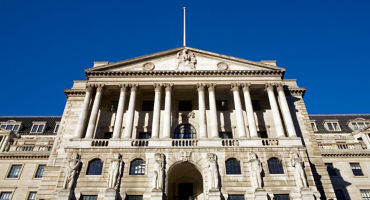“Long and variable” lags vs financial conditions easing
Monetary policy famously operates through financial conditions with “long and variable” lags. Chair Powell expects those lags to affect economic data in the coming months. There are several reasons to believe lags between changes in financial conditions and the real economy may be longer than in previous cycles. These include the extraordinary levels of fixed-rate debt that corporations have issued at low rates and the pervasiveness of low fixed-rate mortgages. Both suggest that corporations and consumers may not “feel” higher rates for some time.
What’s more, the reduction of global central bank balance sheets is in its initial stages. The Bank of Japan and the Bank of England initiated asset purchases in 2022 to offset currency depreciation and financial instability, respectively. Additionally, the Fed created its Bank Term Funding Program (BTFP) and saw increased borrowing at its discount window amid banking stress earlier this year, all of which offset initial balance-sheet reduction.
Despite this backdrop, financial conditions have eased in recent months, as optimism about artificial intelligence (AI) and resilience of economic data have bolstered risk appetite. If the lag between financial conditions and the real economy is shorter than in previous cycles (which could be the case due to technological advances and the FOMC’s adoption of “forward guidance” as a key tool), the incremental effects of monetary policy tightening to date may be limited. For example, home prices, which are an expected source of disinflation in the coming months, appear to have troughed at levels above FOMC expectations.
Chair Powell dismissed a question about recent easing in financial conditions, suggesting that short-term fluctuations are not a concern for the FOMC, but continued moves in this direction may prove unsustainable.













The real issue on rate cuts? Keep your eyes on the dot (plot)
Keep your eyes on the Fed's 2025 dot plot. The real story is where policy rates are headed, not just the next rate cut.
By
Brij Khurana